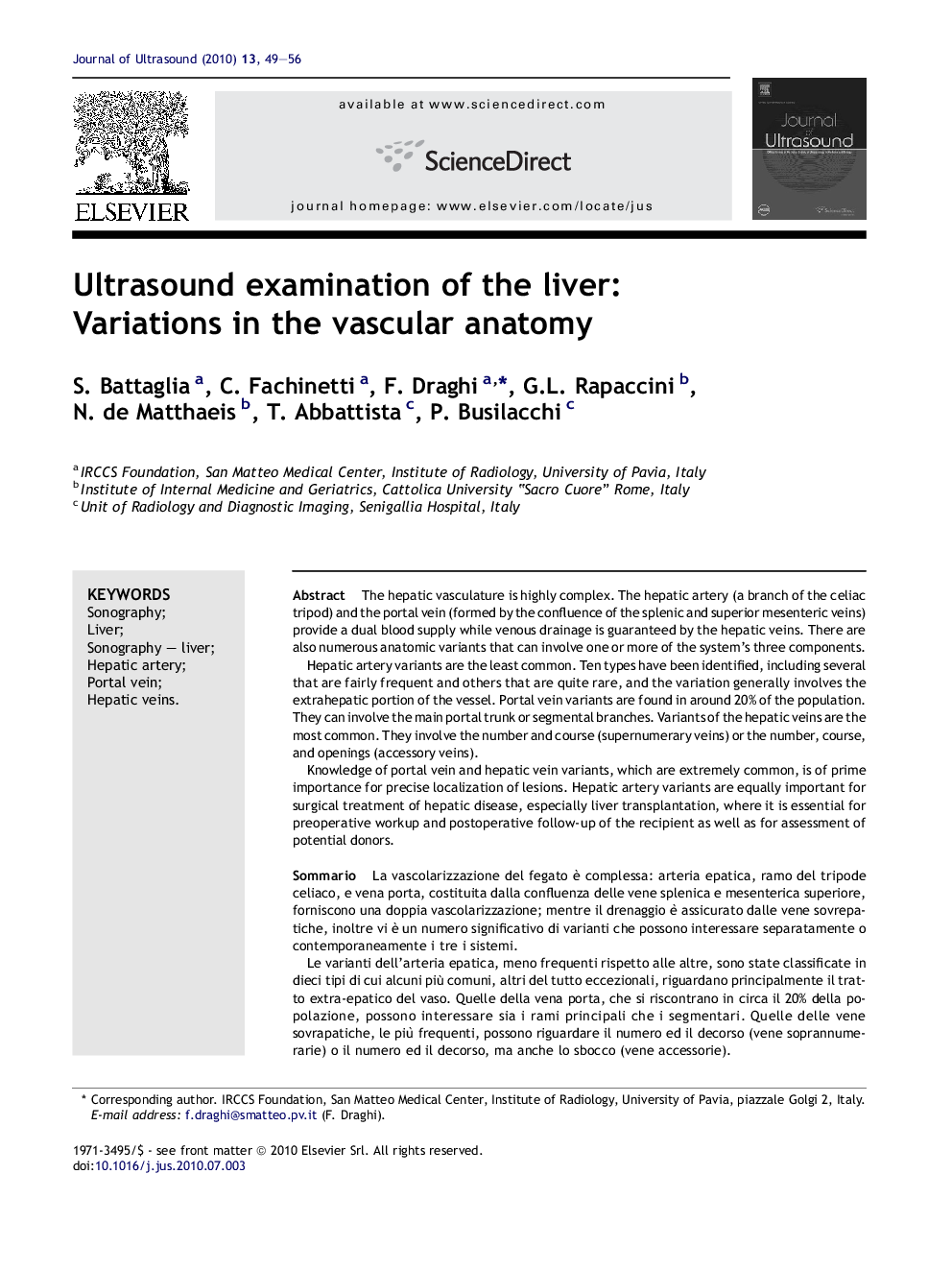| Article ID | Journal | Published Year | Pages | File Type |
|---|---|---|---|---|
| 4236885 | Journal of Ultrasound | 2010 | 8 Pages |
The hepatic vasculature is highly complex. The hepatic artery (a branch of the celiac tripod) and the portal vein (formed by the confluence of the splenic and superior mesenteric veins) provide a dual blood supply while venous drainage is guaranteed by the hepatic veins. There are also numerous anatomic variants that can involve one or more of the system’s three components.Hepatic artery variants are the least common. Ten types have been identified, including several that are fairly frequent and others that are quite rare, and the variation generally involves the extrahepatic portion of the vessel. Portal vein variants are found in around 20% of the population. They can involve the main portal trunk or segmental branches. Variants of the hepatic veins are the most common. They involve the number and course (supernumerary veins) or the number, course, and openings (accessory veins).Knowledge of portal vein and hepatic vein variants, which are extremely common, is of prime importance for precise localization of lesions. Hepatic artery variants are equally important for surgical treatment of hepatic disease, especially liver transplantation, where it is essential for preoperative workup and postoperative follow-up of the recipient as well as for assessment of potential donors.
SommarioLa vascolarizzazione del fegato è complessa: arteria epatica, ramo del tripode celiaco, e vena porta, costituita dalla confluenza delle vene splenica e mesenterica superiore, forniscono una doppia vascolarizzazione; mentre il drenaggio è assicurato dalle vene sovrepatiche, inoltre vi è un numero significativo di varianti che possono interessare separatamente o contemporaneamente i tre i sistemi.Le varianti dell’arteria epatica, meno frequenti rispetto alle altre, sono state classificate in dieci tipi di cui alcuni più comuni, altri del tutto eccezionali, riguardano principalmente il tratto extra-epatico del vaso. Quelle della vena porta, che si riscontrano in circa il 20% della popolazione, possono interessare sia i rami principali che i segmentari. Quelle delle vene sovrapatiche, le più frequenti, possono riguardare il numero ed il decorso (vene soprannumerarie) o il numero ed il decorso, ma anche lo sbocco (vene accessorie).La conoscenza delle varianti portali e delle vene sovrepatiche, estremamente frequenti, è di primaria importanza per la possibilità di localizzare con precisione eventuali lesioni; non meno importante è la conoscenza delle varianti dell’arteria epatica, in relazione alle terapie chirurgiche, in particolare per quello che riguarda i trapianti, sia nella fase pre-operatoria, sia nella valutazione del potenziale donatore, sia nel follow-up.
